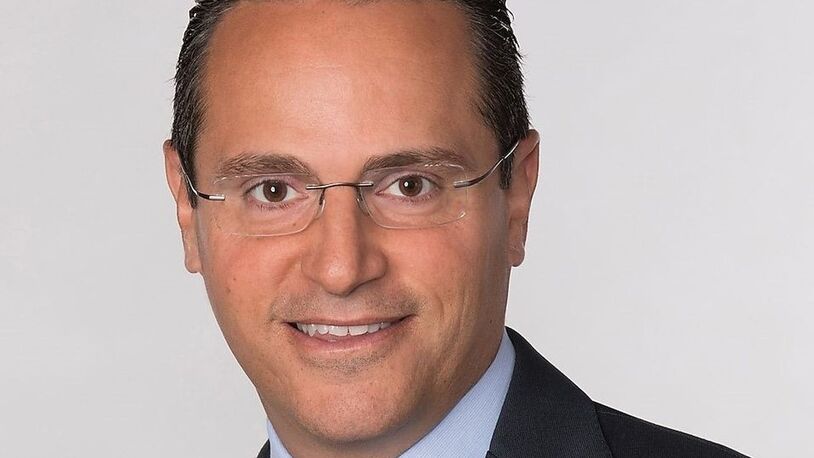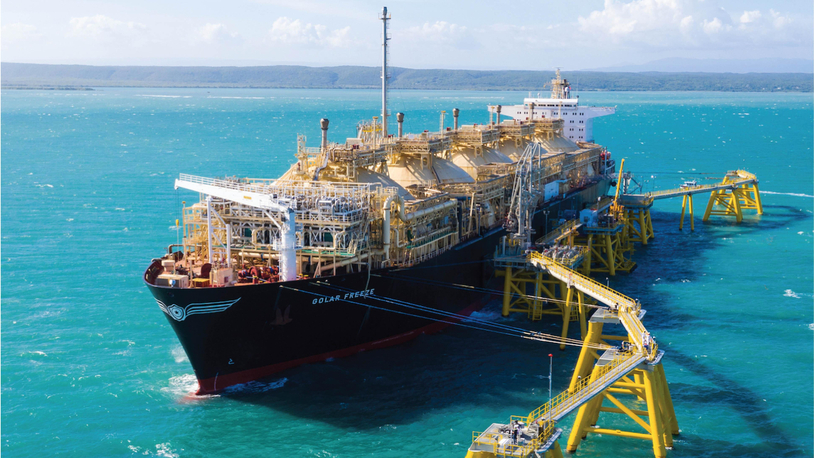Business Sectors
Contents
Floating LNG warms up for GDF Suez
Although it is a major player in the global LNG market, GDF Suez has had relatively little to do with the offshore sector to date. The company is the world’s third largest importer of LNG and the biggest buyer of gas in Europe. Its diversified portfolio of LNG supplies aggregates 16 million tonnes per annum (mta) from six countries and it charters a fleet of 17 LNG carriers to make the necessary deliveries. This capability is complemented by a significant presence in regasification terminals around the world.
Of this fleet of ships, it operates only two – GDF Suez Neptune and GDF Suez Cape Ann – that have regasification capabilities. Completed in 2009 and 2010, the 145,000m3 newbuildings were taken on long-term charter from Höegh LNG primarily with the aim of supplying GDF Suez’s offshore Neptune LNG terminal situated off the coast of Massachusetts near Gloucester.
GDF Suez had embarked on this submerged turret loading buoy-based import project before the US shale gas boom, when that country was expected to become a major buyer of LNG. The tables have now turned, to the extent that the US Maritime Administration recently approved a request from GDF Suez for a temporary five-year suspension of Neptune LNG’s deepwater port licence. The terminal has been inactive in recent years and the company believes it is likely to remain idle for the foreseeable future.
Despite this setback, however, GDF Suez is about to become much more involved with floating regasification terminals. As this issue was going to press GDF Suez Cape Ann was arriving at Tianjin to go on station as China’s first LNG import terminal based on the use of a floating storage and regasification unit (FSRU).
China National Offshore Oil Corp (CNOOC) has taken the ship on a five-year subcharter to serve as a 2 mta LNG receiving terminal at the northern Chinese port. Storage space on the FSRU will be supplemented by two shore tanks of 30,000m3 each adjacent to the Tianjin terminal’s jetty. The tanks will facilitate onward distribution of LNG, including by road tanker. Beijing is only 100km distant from the port.
This first phase of CNOOC’s Tianjin project will cost an estimated US$540 million, a sum which includes some modification work carried out on GDF Suez Cape Ann at the Sembawang yard in Singapore to enable continuous regasification operations. CNOOC plans a second phase for its Tianjin facility which will boost capacity to at least 6 mta by 2015. This will necessitate the construction of four shore tanks of 160,000m3 each.
In addition to the FSRU project, GDF Suez signed a gas sale and purchase agreement with CNOOC in 2010 under which it will supply the Chinese company with about 2.6 million tonnes of LNG over a four-year period beginning in 2013. CNOOC is also planning two further FSRU-based LNG import terminals for the Chinese coast – at Yantai in Shandong province and Yancheng in Jiangsu province.
In another notable recent development GDF Suez was awarded a 15-year contract to build, own and operate Uruguay’s first LNG terminal. The facility, to be provided for the Gas Sayago joint venture for positioning in the Punta Sayago area close to Montevideo, will make use of a 263,000m3 FSRU, the world’s largest regas vessel. Gas Sayago was established by the Uruguayan state oil company ANCAP and utility UTE.
The FSRU will have a capacity of 4 mta and be moored at a dedicated jetty, which will be protected by a 1.5km breakwater. The regas vessel will deliver natural gas ashore through high pressure arms located on the jetty head. Mitsui OSK Lines (MOL) has been contracted to provide the FSRU newbuilding and the regas vessel GDF Suez Neptune will be utilised as a bridging facility, commencing in 2015, until the new unit is ready for service in November 2016.
The offshore terminal, known as GNL del Plata, will be one of Uruguay’s most important infrastructure projects. The GDF Suez affiliate Tractebel Engineering will act as owner engineer during the construction phase. The entire capacity of the terminal will be reserved for the use of Gas Sayago.
GNL del Plata also represents a milestone in FSRU construction as the required vessel will be 50 per cent greater in capacity than the largest FSRU yet ordered. MOL has booked the 263,000m3 FSRU at the Daewoo Shipbuilding & Marine Engineering (DSME) yard in Korea. The vessel is to be completed by September 2016 and will enter into service in November 2016 after delivery and commissioning at Montevideo.
Although MOL is one of the world’s largest owners and operators of LNG carriers, GNL del Plata is the first FSRU project for which it has been solely responsible for the provision and management of the unit. The vessel will be 345m long and have a beam of 55m. It will be able to regasify LNG at the rate of 10,900 tonnes/day.
Gas Sayago states that the total project cost is US $1.1 billion. Once the GDF Suez contract expires, the Uruguayan state will assume ownership of the GNL del Plata terminal. Gas from the terminal will supply a 530MW combined cycle gas turbine power plant currently being developed on shore by UTE. As Uruguay’s own domestic gas consumption is expected to peak short of the terminal’s capacity, there is likely to be potential for regional exports.
GDF Suez already has a presence in the South American LNG market through its operation of the 1.25 mta Mejillones terminal in northern Chile. That project makes use of a special jetty at which the chartered LNG carrier BW GDF Suez Brussels is moored to serve as a floating storage unit (FSU). The Mejillones LNG regasification facilities are located onshore at the terminal.
GDF Suez is also involved in a proposed FSRU project in India. In January 2013 Worley Parsons secured a contract to carry out the pre-front-end engineering and design (pre-FEED) study for an LNG import terminal that GDF Suez, Gail Gas and Andhra Pradesh Gas Distribution Corp (APGDC) plan to build near Kakinada in the Indian east coast state of Andhra Pradesh. The project partners plan to implement the scheme on a fast-track basis by using an FSRU capable of processing up to 3.5 mta of LNG.
Bonaparte, a proposed floating LNG production project with which GDF Suez is involved, is described in a separate article on page 13. LNG
Related to this Story
Events
TUGTECHNOLOGY '25
Reefer container market outlook: Trade disruption, demand shifts & the role of technology
Asia Maritime & Offshore Webinar Week 2025
Marine Lubricants Webinar Week 2025
© 2024 Riviera Maritime Media Ltd.













